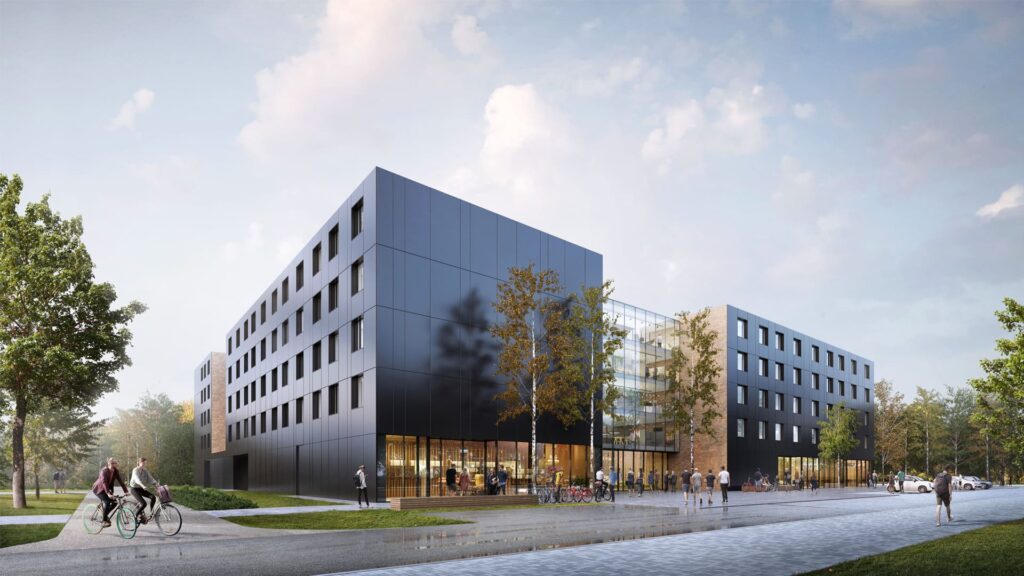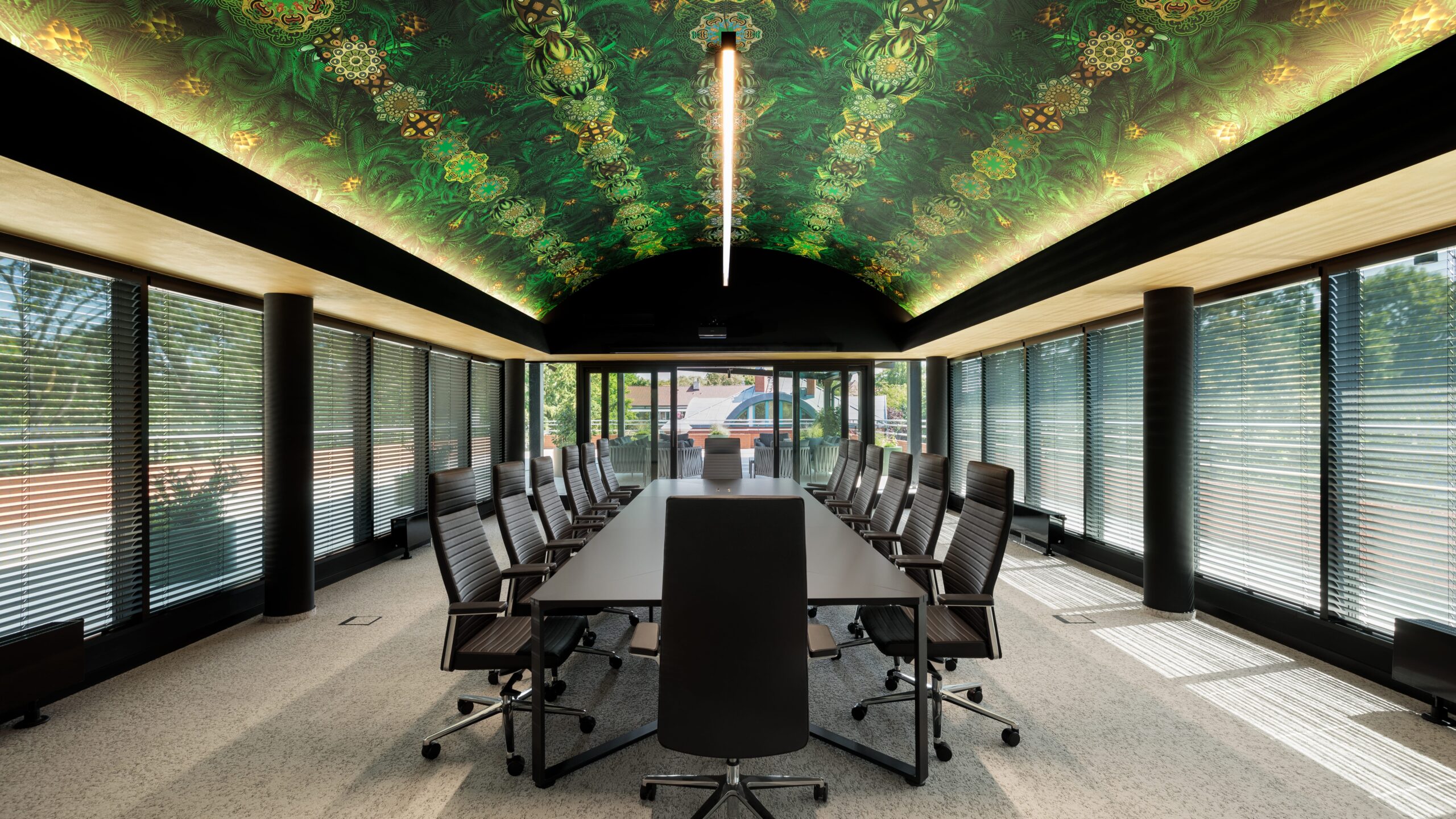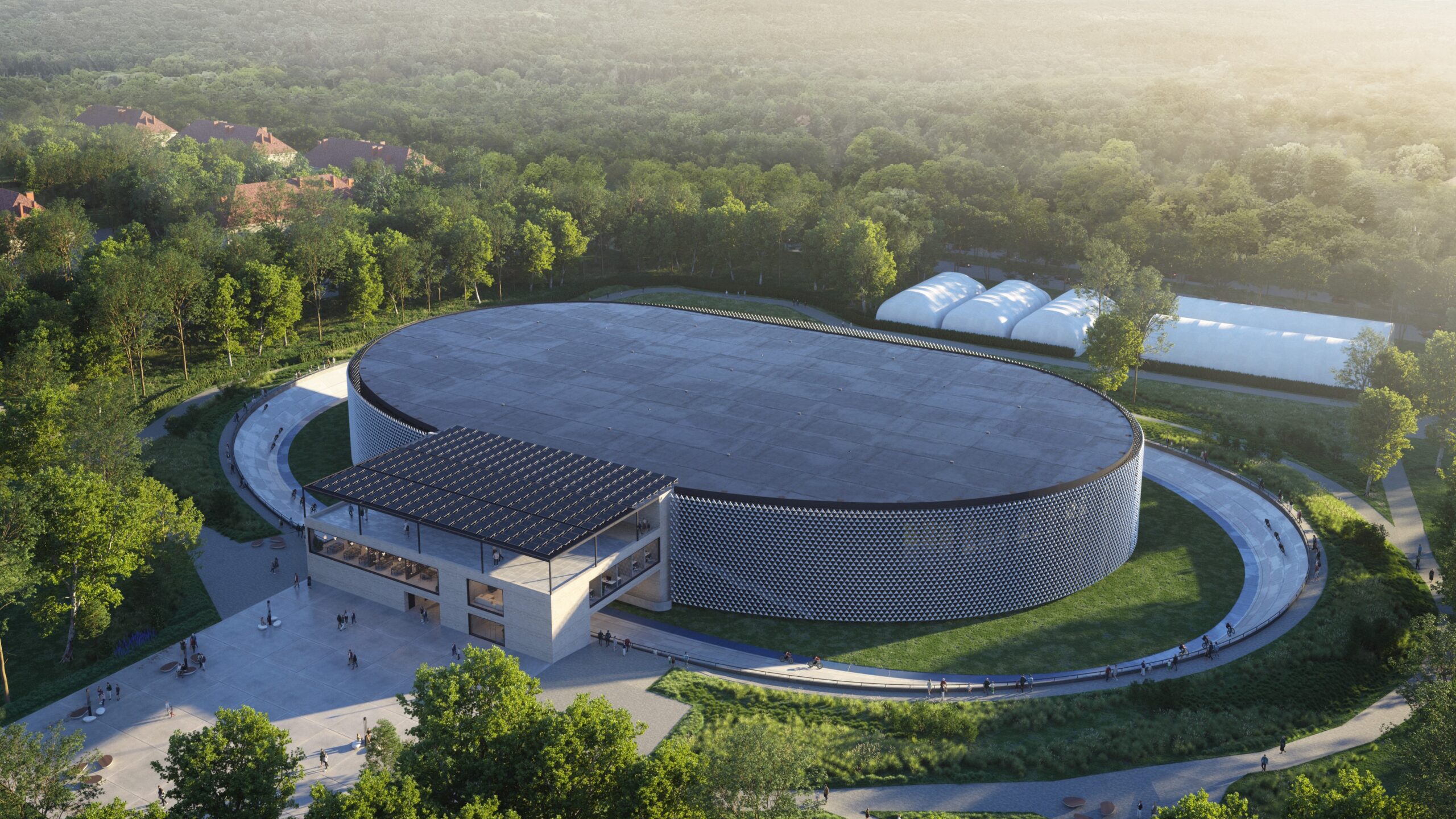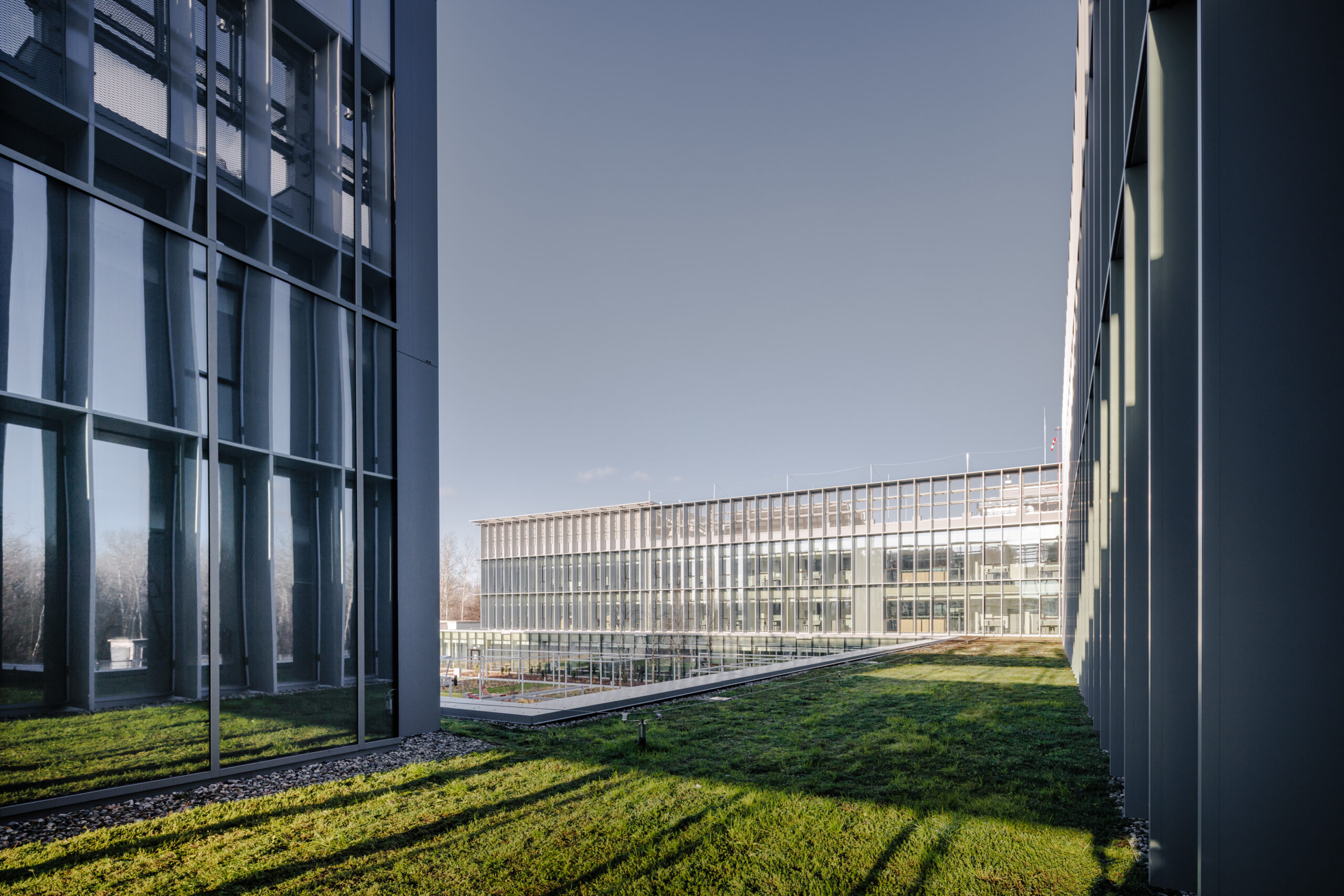Our design won the first prize in a competition for the architectural and urban concept design of a student dormitory with services and internal traffic arrangements, car parks and technical infrastructure for Adam Mickiewicz University in Poznań

— good integration with the space of the campus;
— good functional solutions;
— attractive model of a students’ village;
— elegant architecture of orderly style that fits into the style of the existing campus
The design of a student dormitory for Adam Mickiewicz University (UAM) in Poznań, as defined in the planning permit for the public purpose investment, merges well with the surrounding. The facility has been fitted into the space of the Campus along existing east-west and north-south axes and provides an extension for existing buildings of the Faculty of History, UAM.

The building consists of four residential sections linked with a glazed common space which completes the cluster of buildings and forms an inner yard. The division is also reflected at the ground floor level with services and openings of various size to connect the facility with its surrounding. The arrangement of the inner part, which consists of arcades, passages, services and small architecture, contributes to an attractive common space. The facility has a simple and clear structure. It refers with its form to the architectural arrangement of existing buildings in the Campus, in particular the brick cladding at the inner yard side, which is combined with the grey cladding of external surfaces to create an elegant compilation. This has been considered a major advantage of the competition design.
Solutions that comprise the “vertical village model” add a special value to the design.
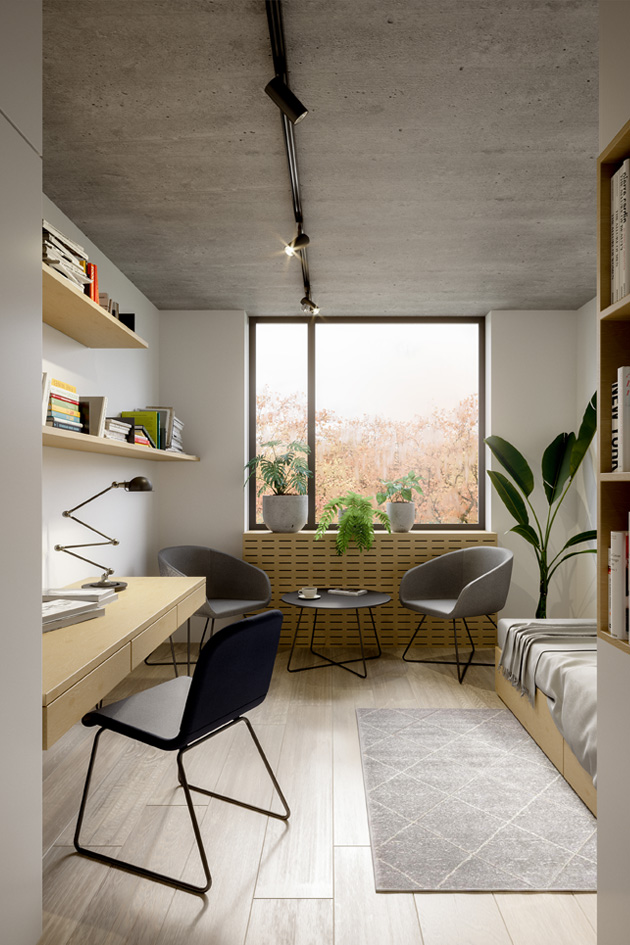
On the one hand, students start to interact already in the entrance hall, and it continues all the way through common space at particular residential levels of the dormitory. On the other hand, groups of rooms are arranged for 25 people each to provide more privacy and a stronger link between individuals and groups and a specific location. The concept goes even further and it uses those internal structures to develop self-sufficient units with the aim of promoting the integration of students.

Some reservations have been expressed regarding functional solutions at the ground floor level, and those need to be revised in further design stages. However, they do not have any major impact of the concept.
